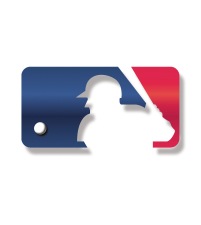 We might be living in an age of budget cuts in the UK, but Major League Baseball is successfully braving the global economic storm in the States.
We might be living in an age of budget cuts in the UK, but Major League Baseball is successfully braving the global economic storm in the States.
Midway through December it was revealed that the average MLB salary had exceeded $3m for the first time in 2010 ($3,014,572, equivalent to £37,425 per week) and just before Christmas details of the final 2010 payrolls were disclosed by the Associated Press.
Typically the figures used to describe a team’s expenditure relate to their opening day payroll, but the final payrolls give a more accurate picture of what a team spent on their playing staff throughout the season.
Everyone clicking the above link would expect to see the New York Yankees at the top of the money tree and, sure enough, that’s exactly where they are with a total of $215,053,064. Their bitter rivals the Boston Red Sox came in second with a relatively modest total of $170,650,856. It’s striking that the difference between those top two, $44,402,208, is more than the sum spent by both the San Diego Padres and Pittsburgh Pirates at the bottom of the spending pile.
Those of us who like to believe that money isn’t the be all and end all can take comfort in the positive year had by the Padres (the Pirates are a lost cause at the moment, but that’s a consequence of a long period of terrible leadership rather than simply a money matter). The level of competition in the National League West doesn’t match that of the AL East, but that doesn’t diminish San Diego’s 90-72 season, in which they narrowly missed out on a playoff spot. No one bettered the Padres when it came to wins per dollars spent ($485,046 per win).
In contrast, the Yankees’ wins cost them $2,263,716 apiece. That’s a cost they can afford thanks to their gleaming new ballpark and lucrative TV network, which both service the biggest sports market in the States. The Red Sox and Yankees effectively force each other to raise the financial stakes and Boston’s free agent-signing exploits this offseason are the latest development in this compelling trend.
That makes the Tampa Bay Rays’ AL East triumph all the more astounding. They had to compete against by far the two biggest spenders, and also a surprisingly competitive Toronto Blue Jays team, with a final payroll that ranked twentieth in the Majors ($77,510,502). To put it another way, the Rays were working with a budget only 45 per cent the size of the Red Sox’s and 36 per cent the size of the Yankees’.
And yet they beat them both.Â
The problem for the Rays is that their success on the field hasn’t put more bums on seats, so their payroll will decrease in 2011 and the cavernous financial gap will increase further. They are also facing a backlash from their rivals.
When the Oakland A’s challenged the established order in the late 1990s, the Yankees flexed their financial muscle and took Jason Giambi away from them by signing him to a seven year/$120m contract in December 2001. Now the Rays have suffered the same fate with Carl Crawford, this time with the Boston Red Sox being the team to slam a seven-year contract on to the table that the Rays couldn’t come close to matching.
The Oakland A’s ‘David versus Goliath’ story was memorably captured in Michael Lewis’ Moneyball and the Rays’ recent success is the subject of an upcoming book, due for release in March, by BaseballProspectus alumni Jonah Keri: ‘The Extra 2%: How Wall Street Strategies Took a Major League Baseball Team from Worst to First’.
Tampa Bay’s 2010 season was brought to an end by the Texas Rangers and they are even further down the financial list than the Rays. The Rangers made it to the Fall Classic while being twenty-second in the spending stakes ($74,302,980); the team that defeated them, the San Francisco Giants, were eleventh on the list.
The Giants were not expected by many to emerge victorious in 2010, which may seem surprising considering their payroll was a shade over $100m. However, spending that sort of money doesn’t offer any guarantees of success, especially if injuries hit a team hard or if the money simply wasn’t well spent in the first place. The sixth-placed New York Mets ($127,560,042) and fourth-placed Chicago Cubs ($142,410,031) would fit into those categories: they spent a lot of money to finish with losing records.
The team that sat between them in the spending league was the Detroit Tigers ($135,913,308) and they also had a disappointing year considering their outlay, finishing third in the AL Central with an 81-81 record.
The AL Central provides more entries (three) in the top ten than any other division now that the Minnesota Twins ($103,039,407) can take advantage of the increased revenue generated by their new ballpark. The Twins have often been labelled as a plucky, mid-market team punching above their weight in recent years, but their tenth position shows that this isn’t accurate any longer. With the Chicago White Sox ($112,197,078) going ‘all in’ with their 2011 team, the AL Central should be a heavyweight battle between three teams this year.
On Friday, we’ll look at how these figures compare with English Premier League football teams.


1 comment
[…] Tuesday, we took a look at the final MLB payrolls from […]